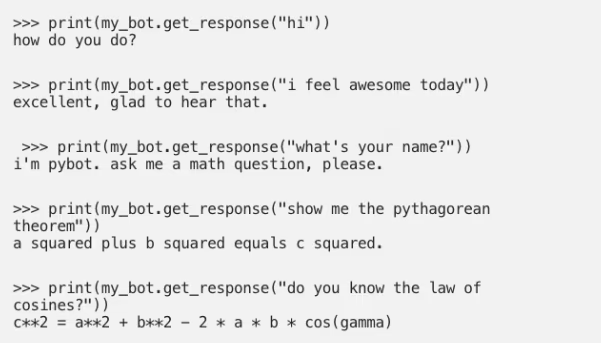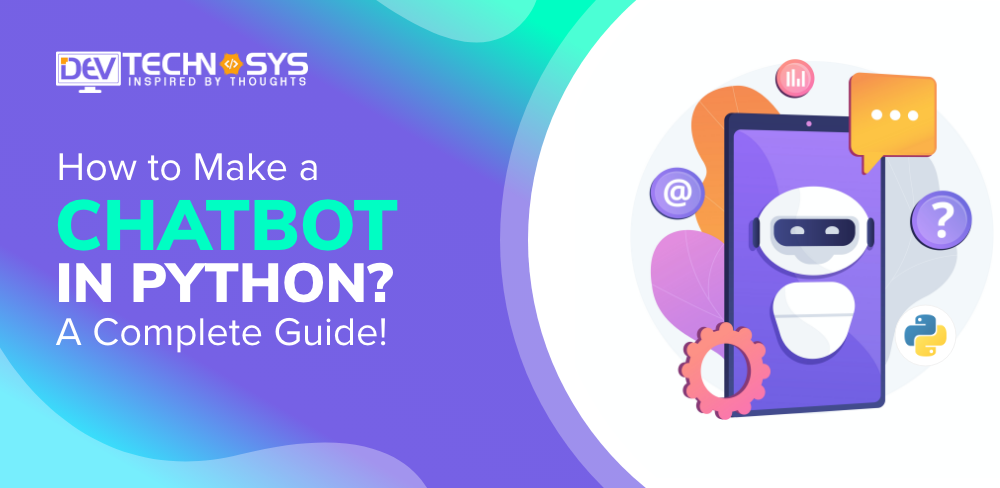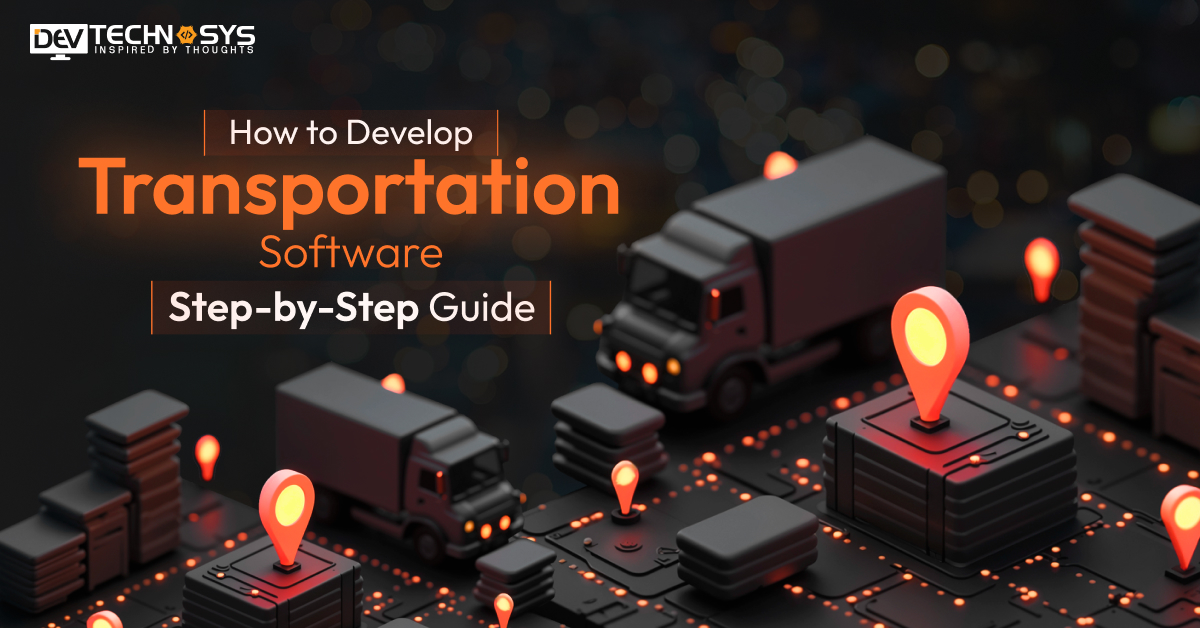Chatbot development has become a widely popular option in this technically advanced business sector for the past few decades. Organizations from a wide range of industries are adopting these intelligent bots because they are so proficient at simulating natural human languages and communicating with humans. From healthcare to e-commerce businesses, everyone prefers to leverage Python chatbots to drive better business profit and bring in high ROI.
As per research, more than 30% of the tasks are accomplished by chatbot development. These automated tools offer great services like customer support and generating data. With the proven chatbot examples like Siri and Alexa, it has become crystal clear to businesses, how integrating chatbots into business processes can make a difference. Due to the ever-increasing demand, more businesses are stepping into chatbot development and wonder. “How to make a chatbot in Python for my business?”
So, in this blog, we will talk about the step-by-step process to create a chatbot in Python. Let’s get started…
What Is A Chatbot?
A chatbot, also known as a chatterbot, is an AI-based software program specially designed to serve the purpose of communicating in the users’ natural languages, either by text or speech. Two of the most famous chatbot examples are Siri & Alexa, which simplify humans’ lives and execute tasks seamlessly.
Such chatbots are more inclined towards performing specific tasks for users like booking a hotel, making transactions, and submitting a form. With the technological advancement in the AI-based domain, the possibilities with chatbots are endless. Overall, a chatbot is one of the best languages for natural language processing and works differently.
How Do Chatbots Work?

Generally, chatbots are defined into two major categories –
Rule-Based Approach
This approach trains the chatbot to reply to questions primarily based on pre-defined rules on which the bot was initially educated. This set of rules can be both simple and advanced. These types of rule-based chatbots can easily resolve a query in just a snap of fingers while failing to resolve the complex queries.
Self-Learning Approach
As the name suggests, self-learning bots can learn independently and need to be trained prior to any query execution. These technologies use AI and ML to prepare themselves for different cases and users’ behaviors. Generally, self-learning chatbots are way smarter than rule-based chatbots. This chatbot is further classified into two more categories –
- Retrieval-Based Model
In this approach, the chatbot retrieves the best data from the available list of responses as per the user print.
- Generative Model
In this approach, the chatbot comes up with its own answers rather than picking from the set of answers. Due to this, the generative model is considered much smarter than the rest.
Current Scenario of Python Chatbot in Today’s Generation
In current times, we have numerous AI-enabled chatbots that use NLP or Natural Language Processing to comprehend users’ commands and learn from experience. Nowadays, chatbots have become an effective tool for organizations with a strong online presence.
Most business professionals use chatbots as a tool to facilitate instant messaging between the customer and the brand. The famous chatbots examples like Siri and Alexa have proven their worth in today’s advanced world. Aren’t these chatbots just awesome?
Essentially, the Python chatbots are programmed in a way to gather the data provided by the user, analyze it with complex AI algorithms, and respond either in written or spoken format. Since these chatbots learn from the users’ behaviour, they can respond to a wide range of queries smartly. All you need to do is create and train the Python chatbots professionally.
Gartner predicts that, by the year 2022, chatbot development will tackle nearly 85% of the customer-based interactions and make it easier for businesses to resolve user queries. So, in this ever-increasing demand for chatbot development, you can also increase your business worth by simply learning “How to make a chatbot in Python?” This will benefit your business in the long term.
How to Make A Chatbot In Python?

To create a chatbot in Python, import all the necessary packages and initialize the variables you want to use in your project. Also, ensure that when working with text data, perform data pre-processing before designing an ML model.
In this process, tokenizing proves to be of great help as it helps fragment the large text dataset into smaller chunks. After that, you can go for lemmatization, where you can transform a word into lemma form. Next, a pickle file is created to store the Python objects to predict the bot response. Once all this is done, the final chatbot development process creates the training and testing databases.
Still, after knowing the complete process, businesses fail to implement chatbots and, in the end, wonder, “How to create a chatbot for a website?” So, here we have mentioned an in-depth process to Python chatbot development.
Prepare the Dependencies
The foremost step to creating a Python chatbot with the ChatterBot is to install the library in your system. This will work amazingly if you create and use a new Python virtual environment for chatbot installation. For that, you have to execute the following command.
pip install chatterbot
pip install chatterbot_corpus
On the other hand, to download the latest chatbot version, refer to GitHub. For that, the following command will be helpful for you.
pip install git+git://github.com/gunthercox/ChatterBot.git@master
To upgrade the chatbot command, type –
pip install –upgrade chatterbot_corpus
pip install –upgrade chatterbot
Finally, your setup is ready, and now you can move to the next step of “How to make a chatbot in Python?”
Import Classes
The second most important Python chatbot development process step is importing the classes properly. So, all you have to do is import two classes, i.e., chatbot from chatterbot and ListTrainer from chatterbot.trainers. For that, the following command will be executed –
from chatterbot import ChatBot
from chatterbot.trainers import ListTrainer
Typing these commands will successfully import the classes into your chatbot.
Create & Train the Chatbot
Coming to the third step of chatbot creation where you have to train the chatbot. So, the chatbot that you will create will be an instance of class “ChatBot.” Once you create a new chatterbot instance, you can train the chatbot to improve its performance. While training the chatbot, ensure that it should possess enough knowledge to get started with specific responses to some inputs.
After that, execute the following command –
My_bot = ChatBot (name=‘PyBot’, read_only=True
Logic adaptors= [‘chatterbot.logic.MathematicalEvaluation’, ‘chatterbot.logic.BestMatch’])
Here the argument represents the Python chatbot, so if you wish to disable the bot’s ability to learn after the training, include the “read_only=True” command. The command “chatterbot.logic.MathematicalEvaluation” helps them to perform mathematical problems, and the “chatterbot.logic.BestMatch” command picks the best match from the list of available responses.
Want to know more about python development?
Besides this, you can also create and train the chatbot with “ListTrainer” or supply it with a list of strings, such as –
list_trainer = ListTrainer(my_bot)
for item in (small_talk, math_talk_1, math_talk_2): list_trainer.train(item)
After executing this command, your Python chatbot is all set to communicate.
Communicate with Python Chatbot
To initiate a communication with your chatbot, use the .get_response() function. The chatbot examples of communication are listed below –

You must understand that Python’s chatbot does not answer all the user queries. Since its knowledge and training is limited, you need to give it some time to train your chatbot more accurately and help it answer all the queries like that of human. This is one of the most time-consuming processes of “How to create a chatbot in Java, Python, and more.”
Train Your Python Chatbot with Corpus Data

Finally, coming to the last step of Python chatbot development, i.e., training the chatbot while using an existing corpus of data. Now, you might be wondering how to train a Python chatbot with a Corpus of data. Well, here is a Python chatbot example for you.
from chatterbot.trainers import chatterBotCorpusTrainer
corpus_trainer = ChatterBotCorpusTrainer (my_bot)
corpus_trainer.train(‘chatterbot.corpus.english’)
The best part is ChatterBot offers this functionality in multiple languages, so users don’t have to face any difficulty. So, you can easily specify a particular set of a corpus in your preferred language, and this is how your Python chatbot will be created.
Read More: How to Build a Chatbot with Laravel?
Summing Up
This is just one of the best ways of how to create a chatbot in Python. Similarly, there are other ways too. For instance, you can use NLTK, which is another resourceful Python library, to create a Python chatbot. The step-by-step process that you have learned here is a very basic chatbot with hardly any cognitive skills.
So, once you understand the process and basics well, you will be able to experiment with the tools and technologies and execute newer commands to make your Python chatbot smarter.
If you are a beginner and are not well-versed in executing commands, it is better to avail professional assistance. The experts hold years of expertise in developing even complex chatbots like a pro. You can simply share your chatbot development requirement with the dedicated developers, and they will craft a perfect chatbot for you. We hope you find this blog useful














